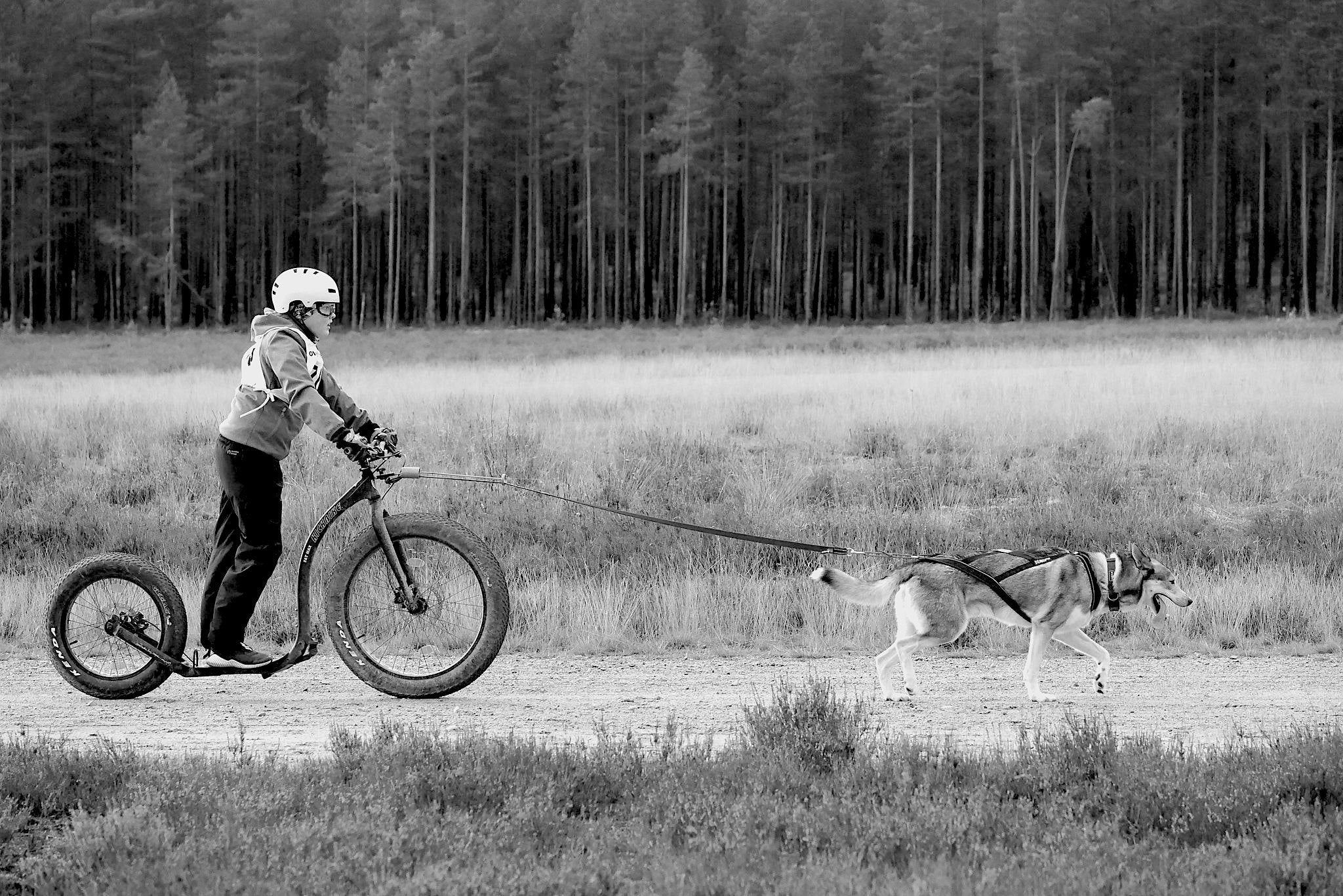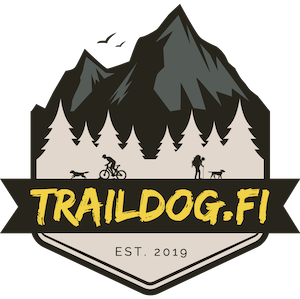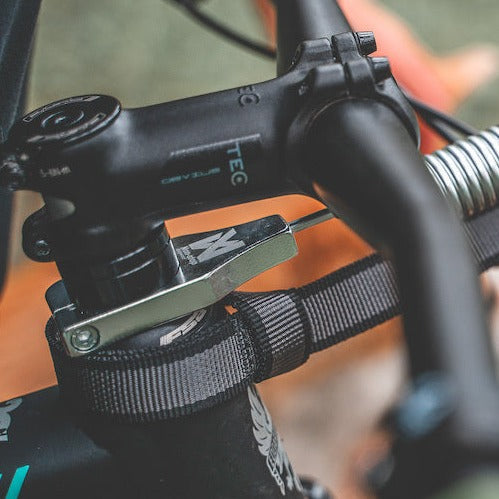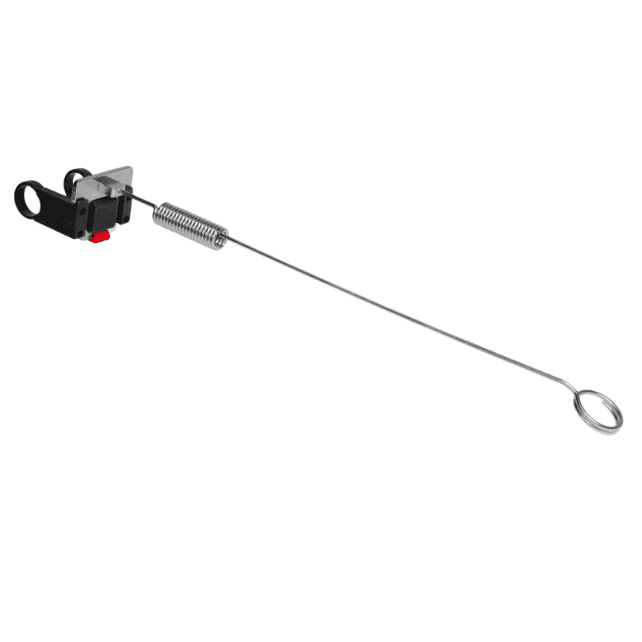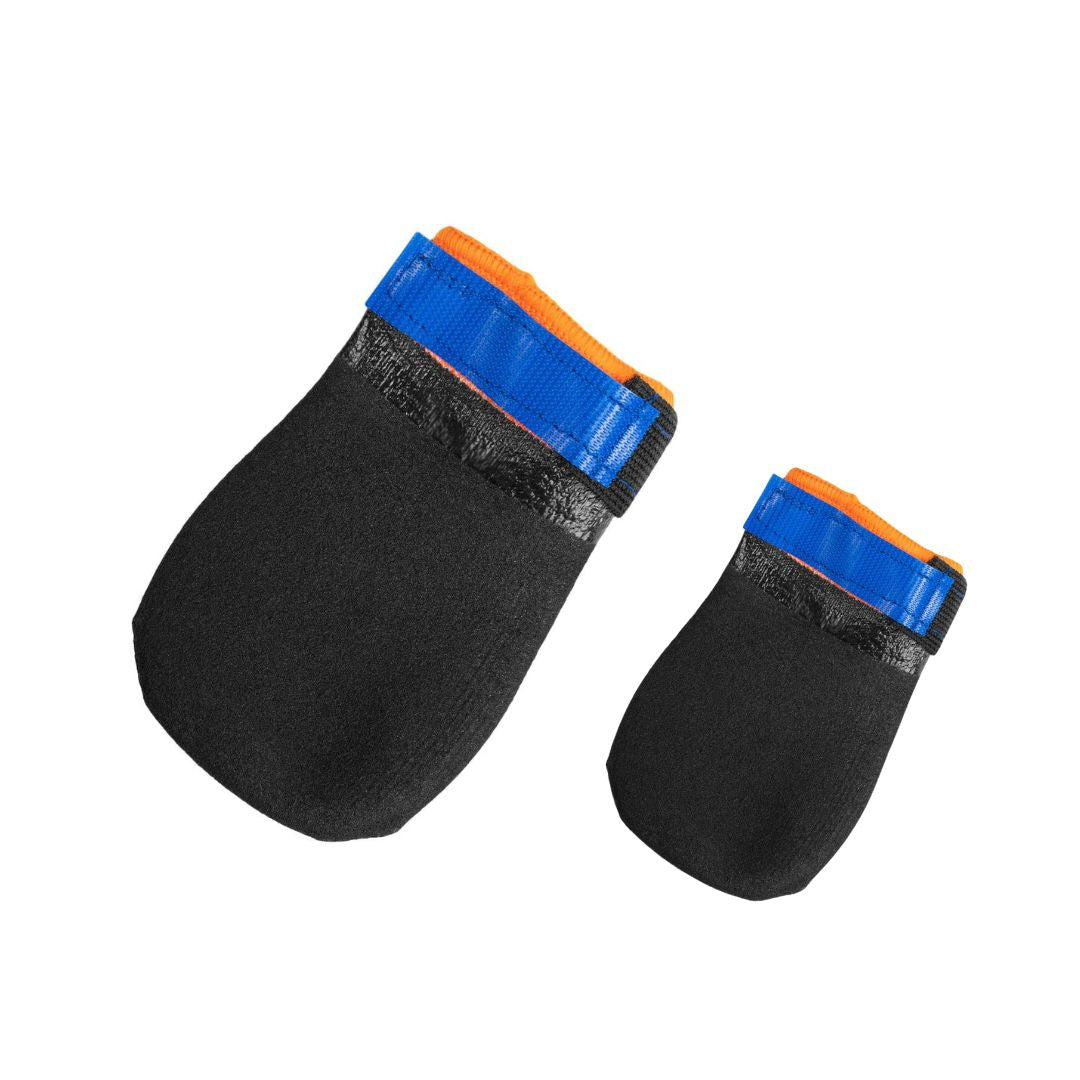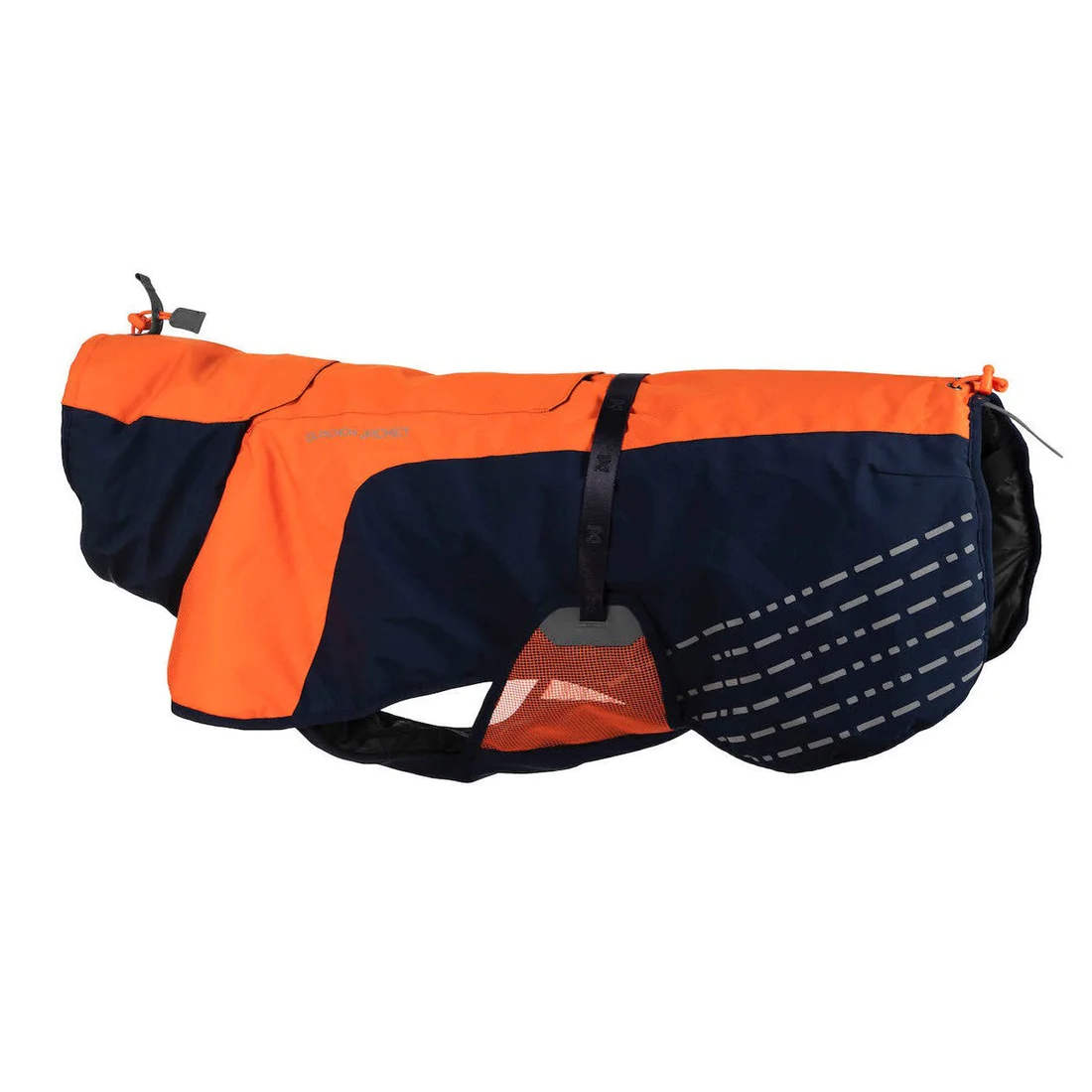Sled dog sport gear
The right gear for hobbies, training, and competing!
CANICROSS & SKIING
-
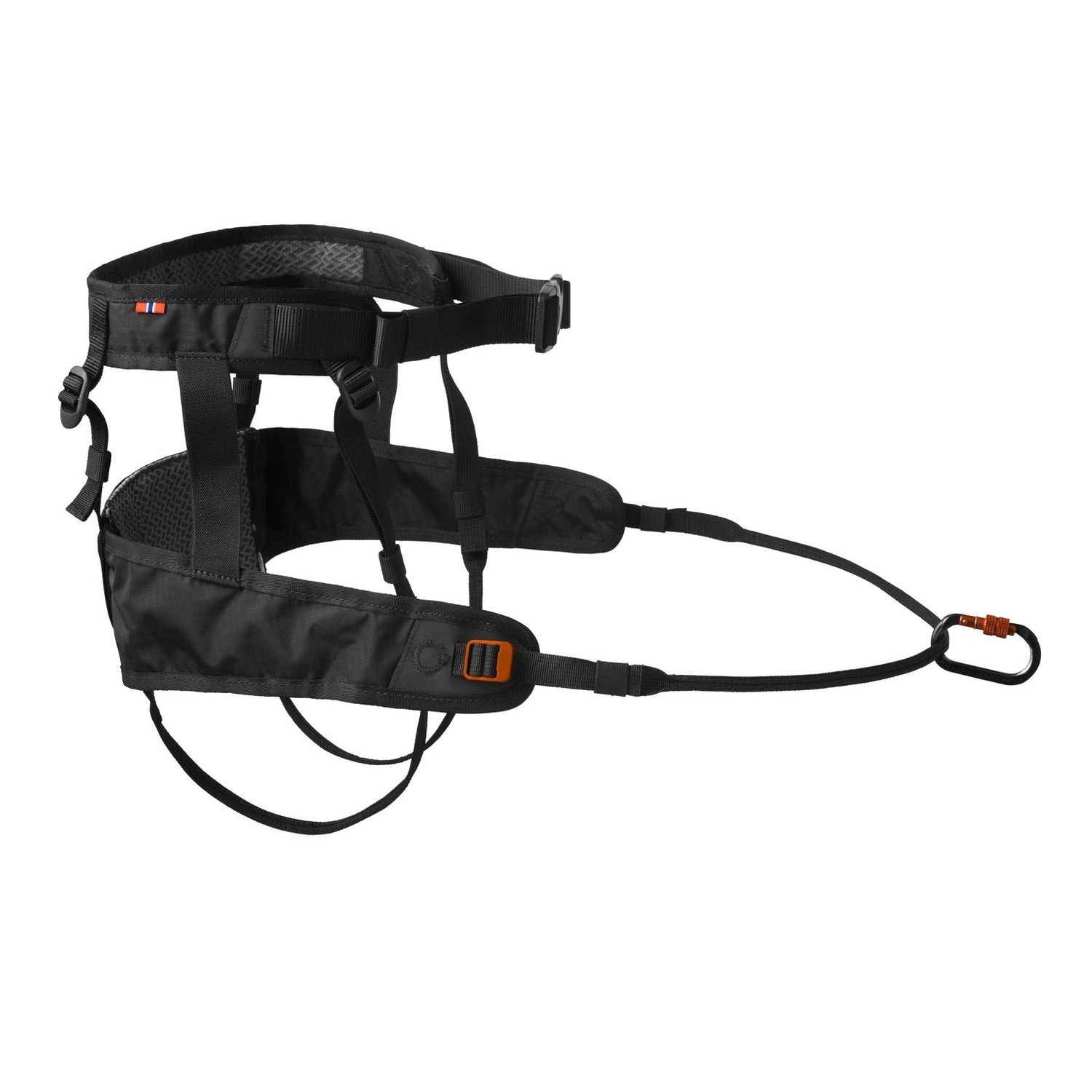
Canicross belts
A high-quality, ergonomic canicross belt that guides the pull to the person's...
-
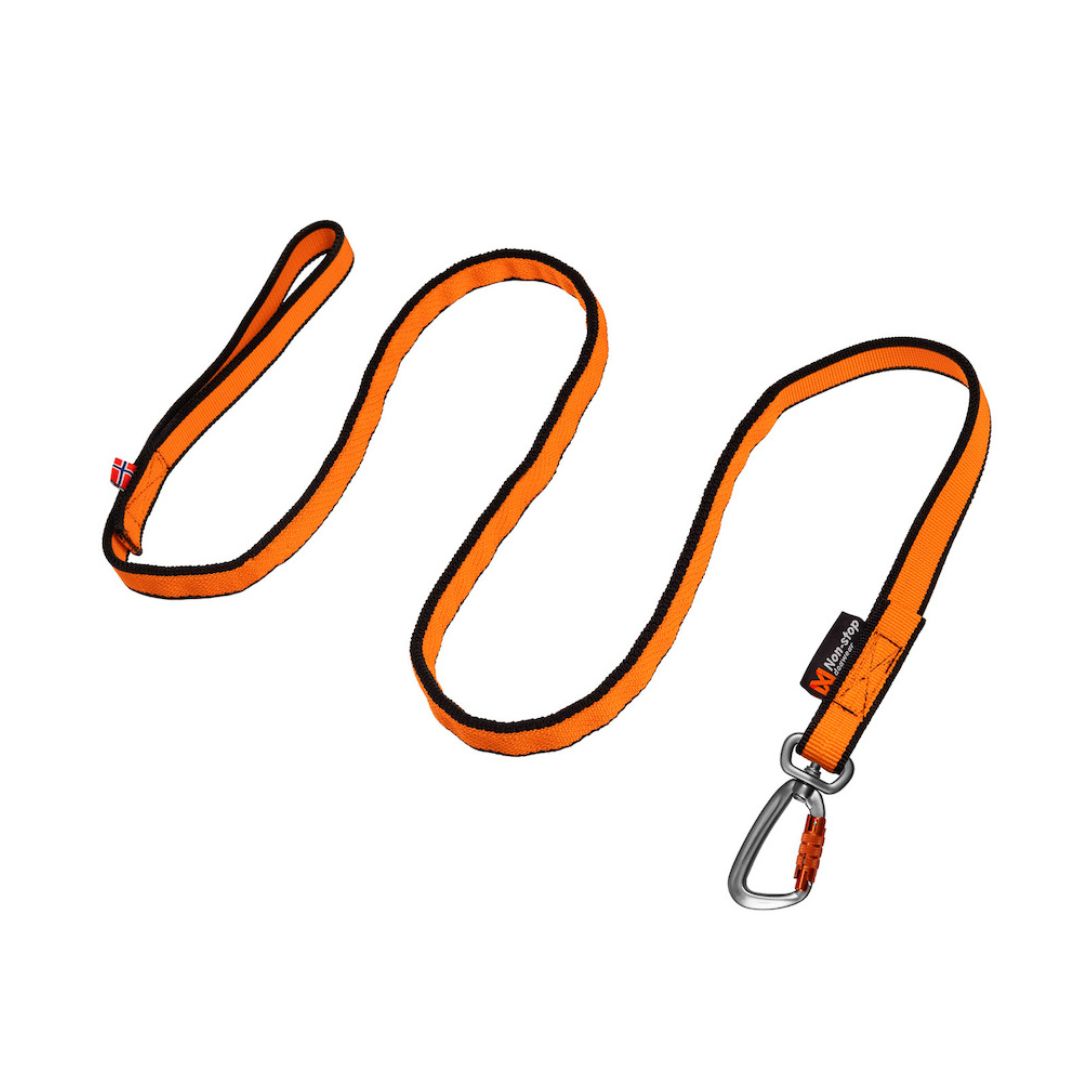
Pull lines
A flexible Pull line is an essential piece of equipment in...
-
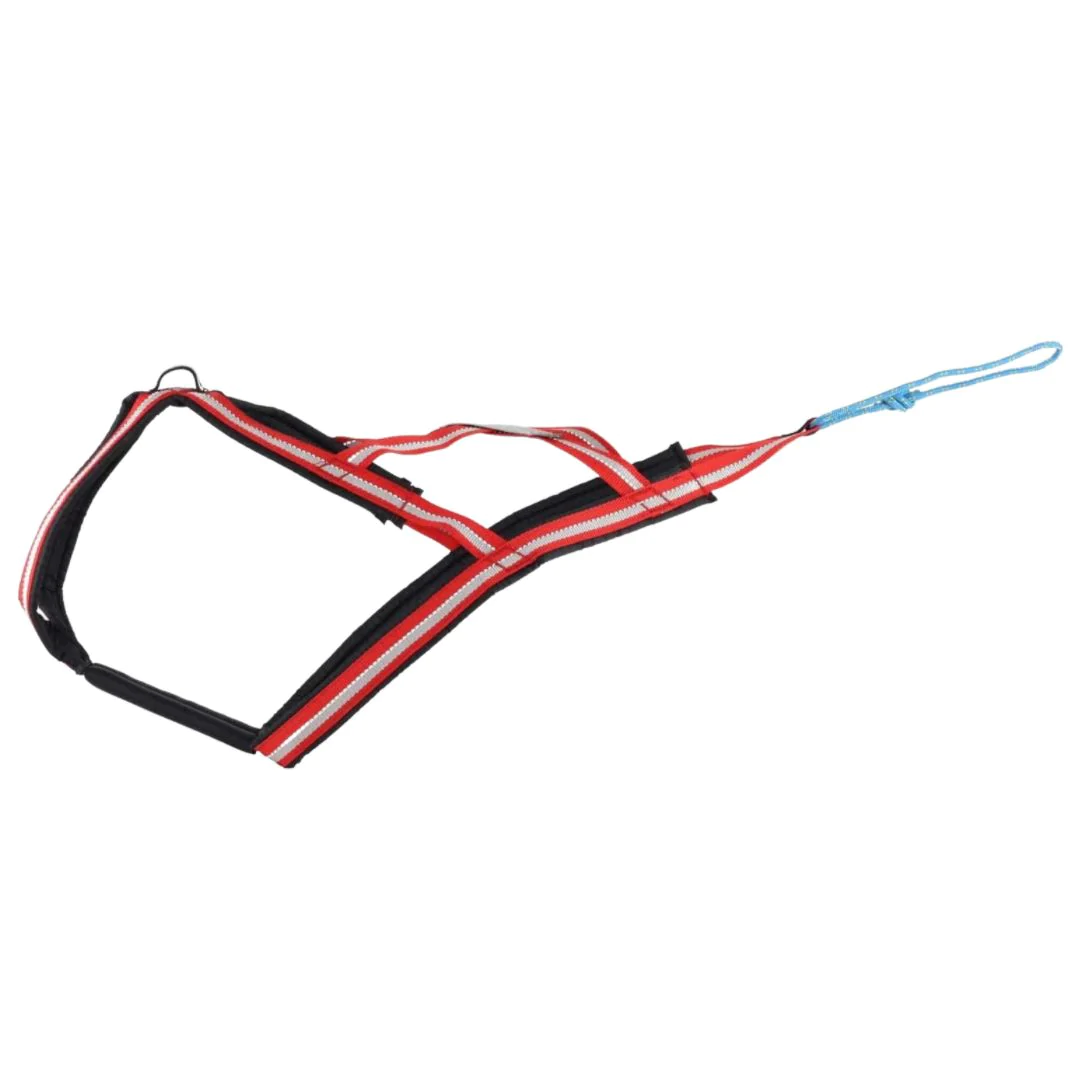
Pulling harness for dogs
Ergonomic pulling harness for dogs for all pulling sports: canicross, skijoring, bikejoring,...
Explore the topic
Canicross as a sport
Canicross is for many the easiest way to start Sled dog sport. In canicross, the dog team moves forward so that the dog pulls the runner. The dog has suitable pulling harness and the person has a canicross belt on the hip. There is always an elastic pull line in between that dampens jerks.
In canicross, the so-called weakest link is usually the runner, as the dog team mainly moves at the pace the runner can run. Of course, the dog can provide significant pulling assistance, but compared to other sled dog sport disciplines, the dog's pulling power is not as decisive in canicross. The sport is therefore easy to practice even at a competitive level with many different types and sizes of dogs. Many also practice canicross completely without competitive goals: it is an easy way to improve both your own and the dog's fitness. The dog is a great pacer and doing it together gives a whole new boost to normal walks!
Starting Canicross
For some dogs, pulling comes naturally, while others may need more encouragement to pull. If you want your dog to become a confident puller who does not stop for smells or other distractions, it is worth practicing pulling just like any other new skill. It is advisable to start canicross training gradually. Pulling the runner is hard work for the dog, so initially the distances are only tens or hundreds of meters. If you do not let the dog get too tired, it will keep its enthusiasm for running.
When can you start canicross?
You can start practicing directional, start, and stop commands already with a puppy during everyday walks (and continue reinforcing them throughout the dog's life). However, for actual pulling training, the dog should be fully grown and healthy. A basic level of fitness for both the dog and the runner is a good foundation for starting canicross. The runner's physique is also put to a different test in the sport than running without pulling, so it is good to have supporting muscles and running technique in shape to prevent sports injuries. This is especially emphasized when running with large, strongly pulling dogs – with smaller dogs, the effect of pulling is naturally smaller.
The threshold for starting canicross is very low anyway. For example, compared to bikejoring and skijoring, it is much easier for a person on foot to control the dog. Canicross also works well as a starting pulling sport for the dog, even if the goal is to focus later on other sled dog sport disciplines.
Equipment in good condition from the start
Whenever the dog is put to pull, the equipment must definitely be in good condition: pulling harness of the right size for the dog, elastic pull line, and a canicross belt with leg loops for the runner. So do not fall into the thought that you will get the right equipment after you have started the sport. The right equipment is a safety factor for both you and your dog. For example, poorly fitting pulling harness can quickly crush the dog's motivation for the whole sport. Canicross equipment is also versatile: often the same running belt and elastic line can also be used on everyday walks and hiking/trips. Read more about equipment below.
Basic exercises
Pulling training should start with very short pulls of a few tens of meters towards a reward. The reward can be food, a toy, or even a familiar person. If you can use an assistant, have them encourage the dog verbally from the front. A runner eagerly barking behind can easily make a beginner dog just look back or even stop.
- Run together towards the reward with the dog in pulling harness but not attached. This way the dog gets used to the person running close behind.
- Let the dog pull in the pulling harness towards the reward while you brake the movement. This way the dog gets a feel for pulling in the pulling harness. In this exercise, you do not even have to run yourself at first.
Always remember to warm up and cool down both your dog's and your own muscles before and after even short pulling training sessions.
Lengthening the pulling stretches
When the dog is no longer disturbed by the "brake" running behind and has learned that pulling in the pulling harness is allowed and desirable, the pulling distance can be gradually increased in different training sessions: e.g., 100, 300, 500, 800 meters. As distances increase, turns naturally come into play as well.
To keep the dog's motivation for pulling up, patience must be maintained in training. The length of the pulling section should especially for a beginner dog be such that the dog can pull it with the line tight. With well-executed performances, the dog gains confidence in pulling and the pulling motivation grows.
You can include pulling training as part of a longer running session. It is sensible to first jog to warm up the muscles – take the pulling section in the middle of the run – and then continue cooling down the muscles during the rest of the run. When the dog is not supposed to pull, the leash can be attached to the dog's collar. Warming up and cooling down can also be done with the dog free to move if possible.
Even if your dog already seems to find the exercise rewarding in itself, the thank you waiting at the end of the run is an important part of maintaining pulling motivation.
Equipment for canicross
-
Pulling harness for the dog
Pulling harness that fits the dog well, is the right size, and is intended for pulling sports. With ergonomic pulling harness, the greatest pressure of pulling is comfortably on the dog's chest and not on the sensitive throat area or shoulders. Check out our pulling harness fitting guide here.
If your dog is not really meant to pull but only to move ahead of you on the leash, or even beside you, well-fitting shorter Y-harnesses are excellent instead of long pulling harnesses for running with the dog.
-
Elastic pull line
In all sled dog sport disciplines, an elastic pull line must always be used. The optimal (and competition rules compliant) canicross line length is stretched at least 1.5 m and at most 2.5 m measured from the dog's rear to the competitor's canicross belt lock/hook. According to official rules, there must be no metal parts (lock or ring etc.) on the runner's end of the elastic line, as they may injure the dog if the pull line somehow detaches/is detached during pulling. This safety factor should also be considered during training. - Also remember to check the condition and elasticity of the pull line from time to time: even high-quality pull lines lose their elasticity over time and heavy use.
-
Canicross belt for the runner
It is important that the canicross belt on the runner's hip stays in place while running. Leg loops prevent the belt from sliding up while running. A canicross belt that is too high on the waist is very risky, as all jerks then affect the person's back. The canicross belt should also be wide enough: a competition rules compliant belt is at least 7 centimeters wide on the back. You can learn more about different canicross belt models in our canicross belt guide. One of the most ergonomic options for a running belt is the Non-stop dogwear CaniX Belt, where the pulling point comes from below, at the height of the runner's buttocks.
Canicross competitions
Sled dog sport competitions in Finland are still relatively small events with a relaxed atmosphere. So do not hesitate to participate in your first competitions! Starting a sled dog sport career is easiest with canicross. Practically, the skills required are that the dog moves voluntarily ahead of the runner and is not a danger to other dogs or runners. A dog with aggressive tendencies definitely does not belong in sled dog sport competitions, as tight overtaking situations inevitably occur.
In Finland, so-called dry land sled dog sport competitions are held in spring and autumn. Summers are vacation and base fitness periods for sled dog sport athletes, as hot weather is not suitable for sled dog sport. Competitions under the Finnish Sled Dog Sport Association use the international sled dog sport federation IFSS competition rules. National rules complement IFSS rules in national sled dog sport competitions and Finnish championships.
Information about upcoming canicross competitions can be found here: Sled dog sport competitions and events. In competition announcements, canicross series class abbreviations are DCM / DCW (canicross men / women) and for juniors DCMJ / DCWJ (boys/girls). Even in official competitions, a normal canicross class (usually about 5 km) is often held in addition to a canicross hobby class (usually about 3 km).
Also remember to check out our page: Participating in canicross competitions.
Does the dog always pull on the leash if it practices pulling sports?
One concern for those considering starting pulling sports is whether the dog will start pulling on the leash also on everyday walks. In practice, dogs do learn to distinguish from different equipment when they are allowed to pull properly and when not. Pulling harness feels very different on the dog than normal everyday walking gear, so it is easy for them to distinguish. It is logical for the dog that different harnesses are used on pulling runs than those used to teach walking nicely without pulling in everyday life.
A dog that practices pulling sports does not automatically mean a dog that always pulls on the leash. Practicing pulling sports is also a great way to channel an active dog's energy into exercise. Thus, allowed pulling in pulling gear can very well also make everyday walking easier.
Skijoring as a sport

Skijoring, or skiing with a dog, offers the thrill of speed and good fitness training for both the dog and the skier. In skijoring, the dog runs ahead and is connected to the skier via a pulling harness, a flexible pull line, and a canicross belt. The sport can be practiced regardless of breed, and starting is reasonably easy. As the sport grows, the number of places to practice also increases, and in Finland, you can already hit the trails with your dog in many municipalities.
Before going on the trail, the dog should at least know the basic commands, especially stopping, and the skier should have sufficient skiing skills. On skis, the handler's control over the dog relies largely on verbal communication. Starting the pulling sport is often easier with canicross, as the runner can physically control the dog much more easily than the skier. You can read about starting canicross here.
In skijoring, you can progress to competitions if you wish.
Gear for skijoring
Pulling harness
In skijoring, as in other sled dog sports, the most important equipment is well-fitting and ergonomic pulling harnesses for the dog. The harness must not chafe or pinch anywhere nor restrict the dog's limb movements. A well-fitting pulling harness directs the pull to the dog's chest and the pulling pressure does not come on the dog's throat. Read more about finding the right harnesses in our fitting guide. You can also ask us about choosing suitable harnesses and gear. NOTE: never pull a dog with a collar, not even for testing!
Pull line
A flexible pull line effectively dampens jerks and is an essential piece of equipment for both the dog's and skier's safety. In skijoring, the pull line must, according to competition rules, be stretched to a full length of at least 2 m and at most 3 m. To give the skier enough time to react to the dog's movements, a longer leash (but at most 3 meters) is usually more practical. The skier's end of the elastic line must not have any metal parts (locks, rings, etc.), as they may injure the dog if the pull line detaches or is detached during pulling.
Canicross belt
The skier wears a canicross belt on the hips (note: NOT on the waist), preferably at least 7 cm wide (competition rule and safety factor). The pull should be directed to the skier's hips, and to prevent the belt from riding up too high on the waist, it must have leg straps. Pulling from low down does not easily unbalance the skier and also prevents back strain. In ski competitions, the canicross belt must have either an open hook or a quick-release lock for attaching the pull line, so the pull line can be quickly detached if necessary.
Ski equipment
In actual skijoring, skate skiing is used. Often skiing with a dog is so fast-paced that skate skiing is the natural choice. You can start skijoring experiments with classic skis, but as the speed increases and for actual pulling dog skiing on forest trails, you will need skate skiing equipment. Of course, nothing prevents skiing in the classic style if the dog is not a strong puller due to size or temperament, or if you just want to enjoy the outdoors.
Dog
Skijoring can be enjoyed with almost any type and size of dog. The most important thing is that the dog is healthy and wants to pull or at least move along the trail with the skier. For hobby purposes, most dogs learn to pull and enjoy it. The fastest and strongest larger dogs perform best in competitions, as in skijoring the dog's speed and endurance are emphasized. Popular breeds include German pointers, Dobermans, giant schnauzers, huskies, and various bird dog mixes.
To start pull training, the dog must have passed its growth phase and be healthy. The dog must be basically trained and get along with other dogs well enough to ensure that overtaking situations are safe for everyone.
Starting skijoring
As in all other pulling sports, start with short distances. Basic pull exercises can be done over 50-100 meters with the dog running towards a reward. This way the dog learns to enjoy pulling and gets used to the strain of pulling. Once the dog has learned that it is allowed and desirable to pull in the pulling harness, the pulling distances can be gradually increased. If your dog has not pulled with a pulling harness before, it is easiest to start pull training by jogging behind the dog instead of skiing.
Even if your dog already knows how to pull, the skier is a different puller, and the dog must also get used to the skis and poles as well as, for example, the sound made when braking. For a dog that already knows how to pull but is new to skijoring, a training distance can initially be about one kilometer. Watch your dog and end the pull training as soon as the dog shows the first signs of fatigue. When the dog does not get too tired, the enjoyment of pulling remains. Although running is rewarding for many dogs in itself, remember to praise and reward your dog at the "finish line."
The dog also learns by imitating others, so during the first skiing sessions it can help to follow a more experienced skijorer (or even a dog sledder). Often the dog gets excited to follow another dog, and pulling and following the route come naturally. However, a sufficient safety distance must be kept from the dog team ahead, and overtaking should be practiced as a separate exercise. It is also wise to be sparing with using the so-called "hare." If you want your dog to learn to be an independent puller, it is good to do pull training also without a lure running ahead. Rewards at the end of pulling can be treats or play.
For skijoring, the skier should master a reasonable (skating) skiing technique, especially braking and turning techniques. The required skills naturally also depend on the terrain: starting on flat terrain, such as an ice track, is easy without hills and turns. On trail tracks, mastering skiing technique naturally becomes more important.
Skijoring technique
- In skijoring, the goal is for the skier to disturb the dog's running as little as possible. In other words, to ski at roughly the same pace as the dog's running speed: skiing uphill and braking downhill so that the Pull line stays taut. When making tracks, you can also grab the Pull line by hand to prevent it from loosening under the skis or the dog's legs.
- Always stay behind your dog when going downhill, plowing. Do not ski on the classic track groove where braking is impossible.
- Mastering different skating skiing techniques naturally also makes skiing with a dog easier.
- Dog skills: The dog must at least know how to stop on command. Direction commands as well as cues to slow down or speed up are also useful. Moving to the edge of the track on command makes passing easier.
Etiquette for the dog track
- Always be prepared for unexpected situations. Skijoring is a fast-paced sport, with top speeds even around 30-40 km/h. Keep safe distances and don't stand still in curves or downhill sections. When stopping, keep your dog close to you at the edge of the track or between your legs.
- On a skijoring track, dogs must always be leashed.
- Walking on tracks/track bases is never advisable. A dog track does not mean a track where dogs can be walked or off-leash. Walking on tracks allowed for skijoring endangers both the safety of those practicing skijoring and your own dog. Passing situations come quickly and unevenness in the track base always increases the risk of injury.
- If there is a dog team ahead of you, announce your intention to pass in good time and loudly. Say from which side you will pass (usually from the left). Give the one being passed time to bring their dog closer or completely to the side of the track if they wish.
- If you are being passed, move to the side of the track (usually the right edge), slow down and if necessary stop so that your dog is definitely under control.
- On tracks where dogs are allowed, there are often also skiers without dogs. Inform them of your intention to pass in good time and pass at a safe distance and speed. Thank them!
- Try to keep your dog off the classic skiing track groove. The groove gets damaged and on uneven surfaces at high speeds the risk of your dog spraining increases.
- Give your dog a chance to relieve itself before the ski session and always clean up any droppings from the track!
- Under no circumstances bring an aggressive or unpredictably behaving dog to the track.
Where can you ski with a dog?
Skiing with a dog is generally prohibited on public maintained tracks. Usually, a separate skijoring track is designated for skijoring, or a separate skijoring time slot is given on the general track, for example on certain evenings of the week. Check the allowed track sections/times in advance.
On natural ice, you can move freely with your dog, so skijoring is allowed there. Note that inexperienced dogs may not necessarily know how to pull (at least straight), if there is no prepared track to follow on a wide snowfield. Experienced dogs can of course manage this too.
If you plan to go on a trip to ski with your dog, it's a good idea to contact the destination early and inquire about skijoring opportunities. Every enthusiast can influence the growth of skijoring opportunities. Supply doesn't arise without demand! Actively contact municipalities and ski resorts and share your wishes.
Dog trails in Finland
You can search for existing dog trails in various electronic trail information services using the keywords skijoring or dog trail. Different municipalities use different systems.
- National: LIPAS Sports Facilities (Search for “skijoring”)
- National: Ladulle.fi
- Helsinki, Espoo: Outdoor exercise map
Traildog's compiled dog trail map also shows trails and trail times allowed for skijoring:
Competing in skijoring
In skijoring, competition distances vary between 5-20 kilometers. The skiing technique used is skate skiing, and the dogs of goal-oriented competitors are usually from larger breeds, such as German pointers, pointer crosses, and Dobermans—dogs that have a lot of speed and strength to assist the skier. Of course, you can also compete with smaller dogs.
There are three different competition formats in sled dog skiing:
- skijoring with one or two dogs (so-called line class)
- pulka skiing, where there is a pulk between the skier and the dog
- combined, where skiing is done alternately with and without a pulk
Skijoring competitions in Finland
Sled dog skiing competitions in Finland are organized by two different umbrella organizations: the Finnish Sled Dog Sports Federation VUL and the Finnish Working Dog Association SPKL. Only purebred registered dogs are eligible to participate in the competitions of the latter association. Mixed breeds can also participate in VUL competitions. Many competitions have hobby classes in addition to official classes/tests. You can find the calendar of sled dog sports competitions we have compiled here.
Frequently asked: Does the dog always pull on the leash if it participates in pulling sports?
One concern for those considering starting pulling sports is whether the dog will also pull on the leash during everyday walks. In practice, dogs quickly learn to distinguish from different gear when they are allowed to pull properly and when not. Pulling harnesses feel very different on the dog compared to normal everyday walking gear, so distinguishing is easy for them. It is logical for the dog that different harnesses are used on pulling runs than those used to teach polite walking without pulling in everyday life.
A dog that participates in pulling sports does not automatically mean a dog that always pulls on the leash. Practicing pulling sports is also a great way to channel an active dog's energy into exercise. Therefore, allowed pulling with pulling harnesses can very well also make everyday walks easier.
Choosing a Canicross Belt
A canicross belt is a belt that goes around the person's hips, with an attachment for the dog's leash / elastic pulling rope and is made both to withstand pulling and to distribute the pressure of the pull evenly over the person's hip area. The canicross belt is used in sled dog sports (canicross and skijoring) but it is also excellent for hiking, trekking, and everyday walks with a dog.
All canicross belts are suitable for different sports, but different belts also have different features whose practicality stands out in various activities or with different users. When choosing a canicross belt, it is worth considering the activities the belt is mainly intended for. In some canicross belts, the leash attaches and the pull is directed to the level of the person's hip bones, and in others even lower to the level of the buttocks. In some belts, the leash attachment point is fixed, and in others the carabiner and leash can slide from side to side according to the dog's movements.
The idea in all belts is the same: the canicross belt should sit around the person's hip bones (not high on the waist) and the back part should be wide enough to distribute pressure evenly.

A canicross belt adjusted to the right spot around the hip bones directs the pull to the user's hips, not to the back which is sensitive to jerks.
Why does a canicross belt have leg loops?
Especially with even slightly stronger dogs, the importance of the leg loops is emphasized: the loops prevent the belt from sliding up to the waist during activity. A belt positioned high on the waist/back combined with jerks and pulls easily leads to back injuries. In some canicross belts, the leg loops are detachable. Belts without leg loops are suitable for walking and outings with non-pulling dogs or very small dogs.
Some canicross belt choosers worry whether the leg loops chafe or feel unpleasant. However, you quickly get used to the presence of the leg loops, and if the belt is the right model for the user and properly adjusted, the leg loops shouldn't cause chafing.
Where to attach the dog's leash on hikes? Is any canicross belt compatible with a backpack?
On hikes, dogs usually need to be kept on a leash. However, many want to keep their hands free while hiking, making attaching the leash to the hip a convenient option. However, it should be remembered that backpack hip belts and their buckles are generally not designed to withstand forward pulling force. If you do not want to risk breaking the backpack, a separate canicross belt is a good option.
Often traditional canicross belts can unpleasantly overlap with the hip belt of a backpack. Many hikers therefore end up choosing belt models originally designed for canicross, where the strap attachment is lower than traditional canicross belts at the height of the buttocks and the strap attachment slides freely from side to side. This way the belt does not twist on the person even if the dog pulls sideways.
The picture shows Non-stop dogwear CaniX Belt.
Belts suitable for use simultaneously with a backpack include:
- Non-stop dogwear CaniX Belt 2.0
- Kainpo Race Belt
- Inlandsis Aircross Harness
- Rock Empire Canicross Race Belt
- Lumac Sledding Rebelt Canicross Belt
- Non-stop dogwear Explore Belt (fixed pull point higher than others, but the back part is reasonably flat. Suitable to be used with many lighter backpacks)
If you hike without a backpack and want a simple, more traditional canicross belt model, see below the belts we recommend for skijoring.
The best canicross belt for canicross?
In canicross, it is very important that the canicross belt has leg loops that keep the belt low enough on the hips. Practically all canicross belts with leg loops can be used for canicross, but many runners (and especially those who move with strong dogs in other activities) prefer belts where the pull comes lower at the height of the buttocks. A pull point lower than normal lightens running compared to the traditional attachment point at the hip bones. In belts with a lower pull point, even strong pulling does not easily bend the lower/mid back. Thanks to the moving pull rope attachment, the belt does not twist on the runner during turns or even if the dog pulls sideways.
Low pull point canicross belts especially suitable for canicross include for example:
- Non-stop dogwear CaniX Belt 2.0 (Very lightweight to wear. A model favored by racers)
- Kainpo Race Belt (Lightweight running belt made in Finland)
- Lumac Sledding Rebelt Canicross Belt (lightweight, well padded model also around the hip bones)
- Rock Empire Canicross Race Belt (Ultra lightweight, minimalist model)
- I-Dog Waist Belt Canyon (Sturdy model with good adjustment range)
Non-stop dogwear Canix Belt back
I-Dog Canyon running belt: thanks to the moving leash attachment point, the belt does not twist when the dog moves sideways
Looking for a canicross belt suitable for skijoring and many activities?
The above-mentioned low attachment point belts designed for running can also be used for skiing. However, if you ski more actively with skate skiing, an attachment point lower on the hips may become bothersome as it inevitably restricts lateral kick movement to some extent. If the belt's primary use is skiing, we especially recommend checking out these models:
- Non-stop dogwear Loype Belt Pro: Model with panic carabiner and back pocket, excellently compatible with a flex leash for hiking use. Popular among competitors.
- Non-stop dogwear Trekking Belt 2.0: Traditional model with open hook, many size options.
- Non-stop dogwear Explore Belt: Also suitable for pulling a pulk. Easy to attach multiple leashes or flex leashes. Many size options.
In the picture, Non-stop Loype Belt, popular among active skiers and competitors.
Thinking about competing in skijoring?
In skijoring competitions, the canicross belt must have an open hook or panic carabiner according to the rules. Many canicross belts allow the carabiner to be easily replaced later. Canicross belts that come with race-approved carabiners for skiing include:

Canicross belt together with a flex leash?
Some hikers and those skiing with dogs prefer the freedom of movement that a retractable leash offers instead of an elastic leash. The flex leash can be conveniently attached by its handle to these canicross belt models:
With these belts, the carabiner can be easily detached and the flex leash hung from its handle on the front of the belt so that the flex leash handle can freely swivel according to the dog's movements. The flex leash can be attached and tightened on the front high enough so it doesn't swing unpleasantly near the walker's/skier's feet. For the canicross belt + flex leash combination, we highly recommend adding a shock-absorbing elastic piece between the dog's harness and the flex leash. Suitable elastic pieces include e.g. WAW Basic or WAW Sport.
Choosing the size of the canicross belt
All the canicross belts in our selection are highly adjustable and fit users of very different sizes. For example, a 90-kilogram man and a 60-kilogram woman can often use the same belt - adjusted to their own size. Additionally, some belts come in different size options. On the product pages, you will find detailed measurements and measuring instructions. When choosing a size, consider also if you plan to use the belt in winter with thicker clothing. In borderline cases, it is usually best to choose the larger size, as the adjustment range downwards is generally sufficient.
If you know you need a larger size, you should check out these belt models:
It would be handy if the canicross belt also had space for gear
If you need storage space on your canicross belt, you should check these out:
- Non-stop Trail Light Belt: large back pocket and 2 water bottle pockets
- Non-Stop Trekking Belt 2.0 or Explore Belt: The most spacious solution, as these two models can be equipped with an additional Non-Stop dogwear Belt Bag waist pouch. The pouch fits perfectly a phone, camera, break jacket, and a water bottle.
Canicross belt and a dog that doesn’t pull? Your dog walks nicely beside you and you just want to get the leash out of your hands?
When your dog doesn’t pull much but you just want to free both hands for other tasks, a smart choice is a flexible leash that can be attached around your waist. Examples of such leashes are Ruffwear Roamer Bungee Leash and Non-Stop dogwear Touring Bungee Adjustable.
This kind of leash is handy for normal walks or runs but also when biking with your dog. This way you can keep both hands safely on the handlebars. For actual bikejoring, where the dog pulls the cyclist, there are specific gear options. You can read more about them on our bikejoring sport page.
We are happy to help you find the gear that suits you and your dog best. Please contact us if you need help choosing!
BIKEJORING & SCOOTERING
-
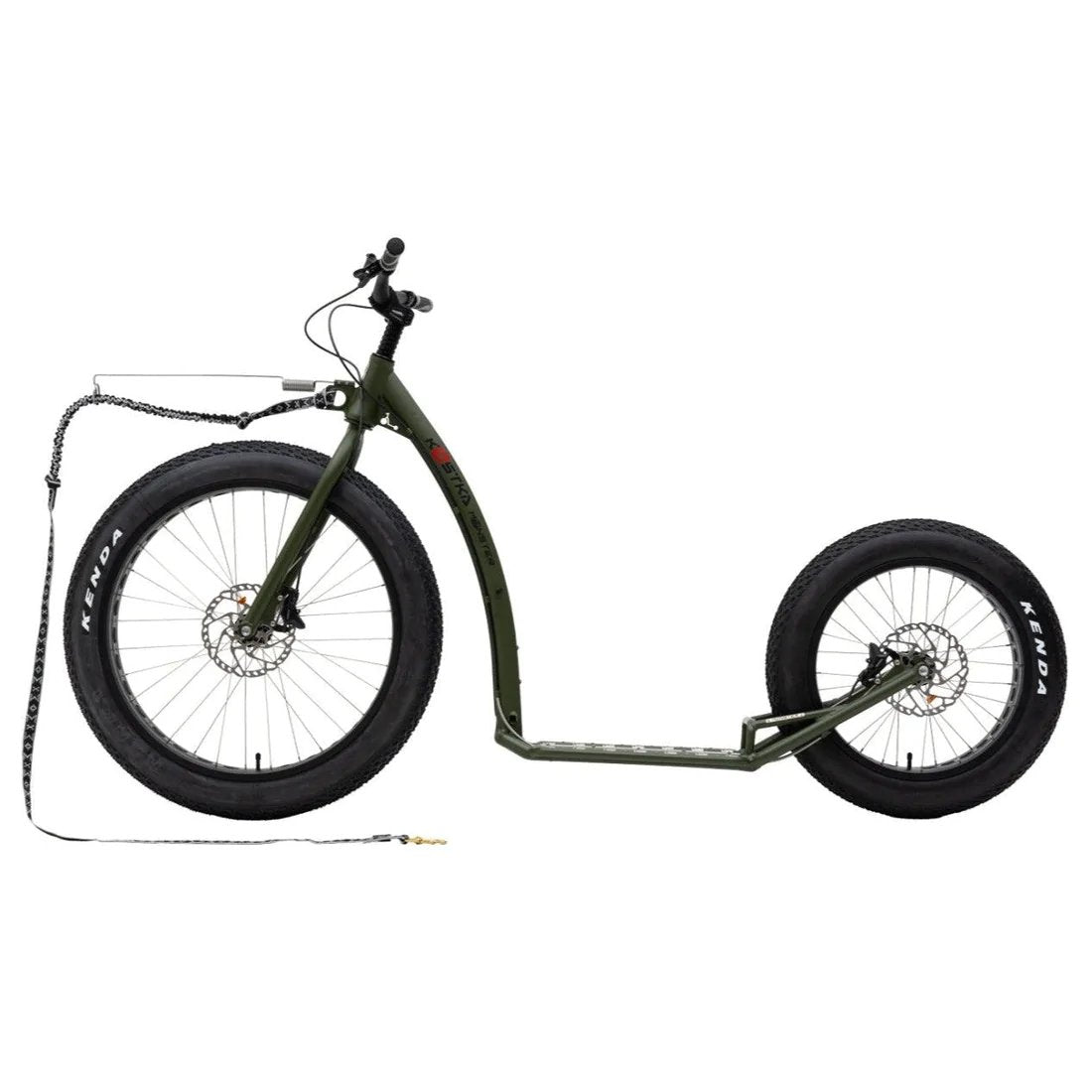
Kickbikes and scooters
A large-wheeled scooter / kickbike is a handy ride both for your...
-
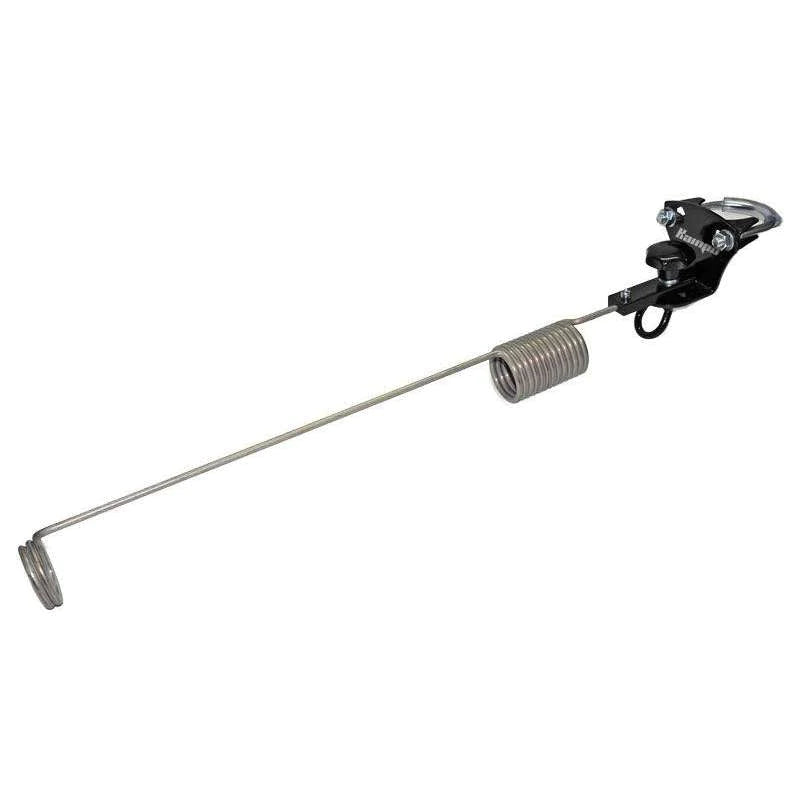
Bike antennas
Bike antenna increases safety when cycling or kickbiking with a dog by...
-

Pull lines
A flexible Pull line is an essential piece of equipment in...
-

Pulling harness for dogs
Ergonomic pulling harness for dogs for all pulling sports: canicross, skijoring, bikejoring,...
-
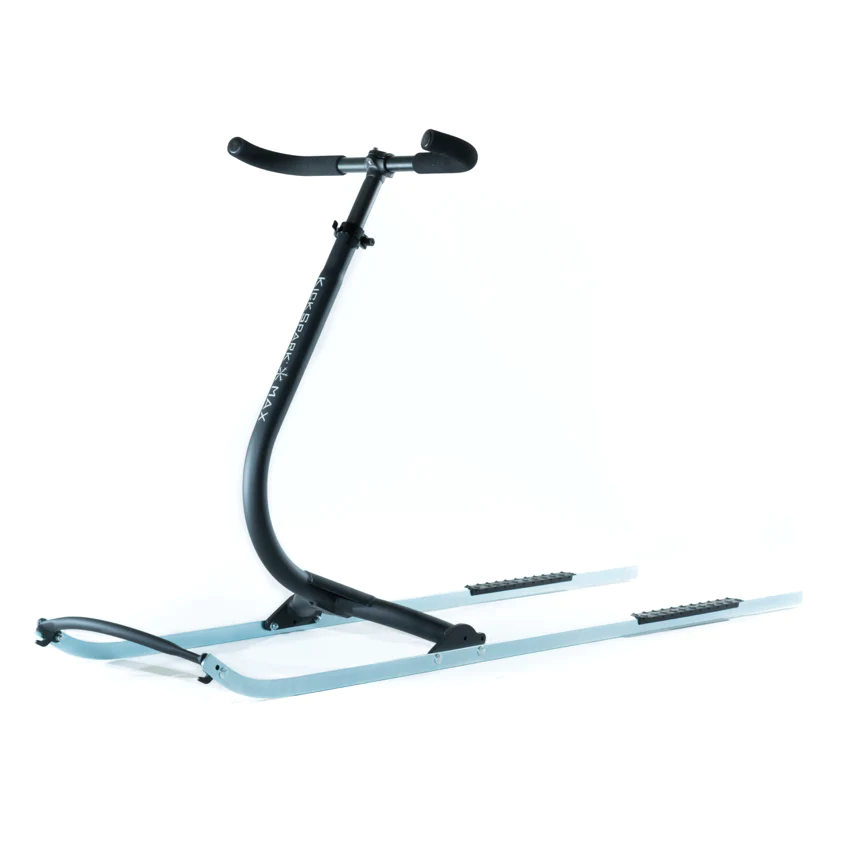
Kick sleds
You can move comfortably with the dog on the sled or without....
Explore the topic
Bikejoring as a sport
When biking with dog, both the dog and the owner get to enjoy the thrill of speed. On this page, you will find information about bikejoring, a Sled dog sport, as well as biking with dog where the dog runs alongside the cyclist.

With the right gear, a little practice, and consideration of conditions, biking is a great hobby with a dog. It also works as a skill that makes everyday life easier if, for example, you don't have a car or just enjoy biking. More and more people also want to take their dog along for mountain biking or bike touring hobbies or start practicing fast-paced bikejoring. Many dogs love the fast pace!
- Bikejoring / bikejoring
Bikejoring is a Sled dog sport where the dog runs ahead of the bike pulling it. A dog equipped with a pulling harness is attached to the bike with a bungee line and often the bike has a forward-facing bike antenna, or “antenna,” that keeps the line up and away from the front wheel. Bikejoring is a fast-paced sport that especially requires speed and fitness from the dog. Top speeds in the sport can exceed 40 km/h and bikejoring can be competed in at the World Championship level.
- Biking with dog
The term bikejoring thus refers to a pulling sport, but you can of course bike with a dog more casually as well. In that case, the dog usually runs beside the bike, but depending on the situation, the dog can also be taught to run ahead or behind.
- Kickbiking / kickbike riding / scootering / scooter riding
A sport close to biking, where the vehicle is a large-wheeled kickbike/scooter. Some, especially those less experienced with biking, find kicking easier than biking with a dog. Check out kickbikes here >
Why bike with a dog?
For most dogs, the most natural way to move would be a trot, not a walk. Thus, a human's walking or even running pace is unnaturally slow for a dog. On a bike, a person can offer the dog more brisk exercise. It suits satisfying exercise needs even when the dog cannot be exercised off-leash, for example due to prey drive or unpredictability. Biking is therefore also suitable, for example, as a base fitness maintainer for hunting dogs outside the hunting season.
Is biking suitable for all dogs?
Biking is a great hobby for healthy and well-built adult dogs. With a young dog still growing, it's worth practicing the basic skills needed for biking and being near and moving with the bike, but actual bike rides and especially starting the pulling sport should wait until the dog is fully grown.
Similarly, with an already aging dog, the length and speed of biking must naturally be adjusted to the dog's condition and health.
Speed according to the dog
Biking with dog the cyclist must always adjust their own speed to suit the dog's pace. Most often this practically means that the cyclist's pedaling cadence is very relaxed and the brakes are used frequently, except on uphill sections.
When biking, it is preferable to aim for the dog to move mostly at a trot. Of course, gallop sprints can also be taken and many dogs enjoy them, but galloping is a more stressful gait for the dog's body and joints than trotting. Trotting loads the dog's body and muscles more evenly, so the main focus should be there.
In Bikejoring, also known as a competitive sport, the goal is the fastest possible performance time, so sled dogs usually move at a gallop and the cyclist's aim is to slow the dog down as little as possible - but training for sled sport dogs mostly involves trotting and free movement.
Where can you bike with your dog?
Choose calm biking routes and times suitable for your dog: especially at the beginning of the hobby when passing is still under training.
When biking with a dog, plan your route so that the dog has a soft and comfortable running surface. Avoid asphalt and large sharp gravel and head for sandy roads, outdoor routes, and trails. If you cannot avoid transitions on harder surfaces, try to use softer shoulders even then.
Good running surfaces for the dog are also soft, not very rocky trails. However, always relate the terrain to your own riding skills. First learn trail riding by yourself and only later add the dog to the equation. For example, beginner mountain biking courses work well as a start for technique practice.
Tips for biking with your dog
- Getting started:
- First accustom your dog to just being near the bike, walking, and the various sounds coming from the bike.
- Get suitable gear. Information about different gear solutions can be found further down this page.
- Be alert and anticipate: “one eye always observes the environment, the other the dog.”
- Give your dog opportunities to relieve itself before biking and also during the ride with permission. This is part of anticipation. Most sudden stop situations relate to the dog stopping to relieve itself. Frequent permitted stops reduce sudden situations.
- Notify other travelers in time about passing. Especially when passing dog owners, it's good to always shout that another dog is coming besides the bike, and give them time to move aside. Even a well-behaved dog running past can provoke the dogs being passed.
- If your dog is beside you, try to pass so that the bike is between your dog and those being passed.
- Always tell your dog what is happening (turns, stops, etc.) The dog learns to listen and riding becomes smoother with practice.
- Start using direction and speed change commands also on everyday walks and runs: this way they strengthen unnoticed.
- Choose routes where your dog has as little contact as possible with asphalt or other very hard and rough surfaces.
- Don't bikejor with your dog when the weather is too warm or humidity is high.
- Take care of the dog's hydration.
- Start and end the walk at a calmer pace and walking so that muscles have time to warm up and cool down.
- Vary the pace and terrains of the walks.
- Remember moderation in the length of walks especially at the beginning of the hobby and biking season.
- Always monitor the dog's endurance. It's better to end the walk before the dog gets tired. This way you will have an eager biking companion also in the future.
- Always wear a helmet!
The right gear choices reduce the risk of dangerous situations
A leash held in the cyclist's hand or on the handlebar grip is unfortunately a common way that maximizes risks when biking with dog. Users of such a solution usually find themselves sooner or later on the road surface. It is pointless to imagine that a human's reaction speed would be enough to release the leash in the necessary hundredth of a second in sudden situations. Additionally, a loose dog can run away, get injured, and cause dangerous situations for other road users.
 Although attaching the dog to the bike or cyclist with a so-called fixed solution may sound scary at first, it is actually the safest way to bike with dog. For bike control and safety, it is important that the cyclist can keep a firm grip on the handlebars with both hands and focus calmly on riding and observing the surroundings.
Although attaching the dog to the bike or cyclist with a so-called fixed solution may sound scary at first, it is actually the safest way to bike with dog. For bike control and safety, it is important that the cyclist can keep a firm grip on the handlebars with both hands and focus calmly on riding and observing the surroundings. The most important safety for biking with dog is always anticipation. In addition, there are gear suitable for biking with dog that reduce the risk of dangerous situations. Examples include bungee leashes around the cyclist's hips, so-called dog running racks attached to the bike (i.e., side-pointing "springers"), or bike antennas (i.e., forward-pointing flexible "antennas").
The choice of gear depends on whether the dog is meant to run ahead of the bike, beside it, or perhaps even behind. The most common way to bike with dog is with the dog running alongside the bike. In Bikejoring, the dog is always ahead of the bike.
When the dog is attached to the bike or cyclist, it is absolutely important for ergonomics that there is a bungee leash or bungee piece in between. The purpose of the bungee is to dampen jerks affecting both the dog and the cyclist. The dog should have well-fitting harnesses that do not choke or restrict leg movements. Read more about different harnesses and their fit here >
Different ways to bike with dog
Biking with dog alongside the bike
+ an easy way to start biking with dog
+ the dog is close and physically controllable
+ well-fitting so-called everyday harnesses (preferably Y-shaped) are enough as harnesses
- running with the dog can become crooked especially if the dog avoids the bike or the running side is always the same
- "wide transport" doesn't fit well on narrow trails
Gear for running alongside
-
Hip leash
In the simplest attachment solution, the dog is attached to a flexible leash around the cyclist's hip. It is important that the leash is around the cyclist's hip bones and not high on the waist, so that possible jerks do not affect the back. The leash should be short enough so that the dog cannot circle to the front of the bike and the leash does not get tangled in the pedals. Tangling is also reduced by the leash going directly sideways from the hip, not straight forward like in pulling belts used in canicross.
One of the best things about the hip leash is that it is easy to get off the bike with the dog. It is also versatile and does not require installations. A popular hip leash for biking is Ruffwear Roamer Bungee Leash shorter version. In addition to adjustable, quick attachment, it has bungee that dampens jerks and a handle from which the dog can be kept very close if needed, for example when passing. The leash is also easy and quick to wrap completely around the cyclist's hip when the dog is not attached.
-
Dog running frame (commonly springer)
Springeriksi is the name for the so-called side running frame mounted around the bike's seat tube. This is a traditional model where the spring of the frame itself dampens jerks. The side running frame is well suited for example on busier roads for biking with a dog, as the dog stays very close beside the bike. However, it takes up space laterally, so it is not suitable for narrow trails.
-
Bike antenna that can be turned from front to side
Some bike antennas can also be installed or turned to the side of the bike. Such a bike antenna is for example Kainpo Combi Plus. More about bike antennas below.
-
Leash attached to the seatpost
This solution works well as a so-called temporary solution and is always better than a leash in the cyclist's hand. For example, a normal leash or a bungee leash can be doubled to shorten it to a suitable length. When short, the leash is less likely to get tangled in the pedals. In this way, the dog is attached to a point with a lot of mass (the cyclist sitting on the saddle), so the dog's lateral movements do not easily affect balance.
Biking with dog in front of the bike / bikejoring / bikejoring
+ the dog can choose its running line more freely than when running beside
+ running posture stays straighter more easily than when running beside
+ works even on narrow mountain biking trails
+ the dog can provide pulling power (if the dog pulls, it should wear a pulling harness)
+ in bikejoring hobby you can also progress to Sled dog sport competitions
- requires lightly trafficked routes and lots of skill practice
Things to consider: Does your dog already know directional commands? Can your dog remain indifferent to other movers and pass by? The basics of Sled dog sport are easiest to teach with canicross before moving on to bikejoring.
Equipment when the dog runs ahead of the bike
-
Bike antenna
Bike antenna refers to the flexible forward-extending so-called antenna at the front of the bike. It is intended for biking where the dog moves ahead of the bike, usually pulling. The Bike antenna keeps the pulling line up so that it does not get tangled in the front wheel of the bike even if the dog slows down. This significantly increases safety.
The spring in the Bike antenna is flexible to follow the dog's movements. However, the bungee itself is not made to withstand pulling, so the pulling line must ALWAYS be attached around the bike frame (or to the loop on the attachment part of some adapter models). The leash should never be attached to the ring at the end of the antenna, but to the bike. It is recommended to use a flexible pulling line that stretches to about 2.5–3 meters with the Bike antenna. pulling line.
There are different Bike antenna models because bikes also vary. Our selection includes several different adapter models, including those suitable for modern mountain bikes/full suspension bikes/fatbikes. The Bike antenna is usually installed either around the bike frame or around the steerer tubes - depending on the bike's design and the adapter model. Adapters that attach to the handlebars are also available.
Check out the Bike antenna selection guide here.
-
Pulling harness
The dog running ahead of the bike must absolutely wear a harness - a pulling dog should wear pulling harnesses intended for Sled dog sport pulling harnesses. Never pull with a collar, not even as a trial. Well-fitting pulling harnesses direct the pulling pressure to the dog's chest, away from the throat. Read more about finding the right harnesses in our fitting guide.
-
Flexible pulling line
The competition rules serve as a good guideline: in bikejoring, the fully stretched pulling line must be at least 2 m and at most 3 m measured from the dog's rear to the front of the bike. It is forbidden to have any kind of metal hook or metal ring at the cyclist's end of the pulling line.
Biking with dog behind the bike
For dogs that enjoy mountain biking, it may be sensible to also teach running behind the bike without being leashed. Especially on very narrow and very uneven trails when mountain biking, this skill can come in handy.
+ physically the most ergonomic / safest in challenging terrains (no jerks or risk of bumps)
+ the cyclist can choose their line without having to watch out for the dog
+ enables traveling very technical trails with the dog
- requires especially good control of the dog without physical contact
- the dog must be indifferent to other travelers and animals

Moving back and following there is easiest to practice first on trails by walking or at walking speed, on a separate command.
Even if the dog is running freely behind the bike, a leash should always be quickly available for overtaking, for example. The previously mentioned leash suitable for side running, worn on the cyclist's hip, works well for this. The dog can also wear a combination of collar and leash around its neck. Such a product is, for example, NiteIze Raddog -collar, which contains a retractable short leash that can be pulled out when needed, so the dog can be connected instantly when necessary.
It is practical for the dog following behind the bike to be attached to, for example, a bell, whose sound lets the cyclist know the dog is keeping up without constantly looking back.
Following behind the bike is a skill that can be partially trained, but naturally it is not suitable for all environments or all dogs.
Bikejoring competitions
Want to join competition activities in bikejoring? In Europe, Sled dog sport competitions on snow-free ground are held in spring and autumn. Summers are the holiday and base training season for sled dog athletes, as hot weather is not suitable for practicing Sled dog sport.
Race routes in bikejoring are usually gravel track type and the length is approx. 5-7 km. According to the rules, the dog must move ahead of the cyclist throughout the entire distance.
In competitions under the Finnish Sled dog sport Association, the international Sled dog sport Association's IFSS Competition Rules are used. National Rules complement the IFSS rules in national Sled dog sport competitions and Finnish Championships. Information about upcoming bikejoring competitions can be found here: Sled dog sport competitions and events. In competition announcements, the bikejoring series class abbreviation is DBM / DBW (bikejoring men / women).
Choosing a scooter
On this page, you can compare the features of different kickbike/scooter models. If after reading the page you are still unsure about your choice, we are happy to help.
Kickbike, kikkari, footbike, scooter, potkupyörä, scooter: what kind of contraption is it exactly?

Unlike stunt scooters, usually seen under children as small scooters, a large-wheeled scooter (engl. scooter, footbike) resembles in appearance and size a normal bicycle - but without a saddle and pedals. There are different models, and they vary among other things in frame size and the size and width of the tires.
In Finland, many know the so-called adult scooters / kickbikes by the name Kickbike, since Kickbike brand scooters are designed in Finland and naturally they are also the most visible in our country. In Europe, there are also other companies specializing specifically in these vehicles. Such brands include the Czech Kostka and Yedoo. Scootering seems to be almost a national sport in the Czech Republic, but scooters are also increasingly seen in other countries, both in everyday life and on outdoor trails.
A scooter is suitable for everyday exercise, as a replacement for a commuter bike, as a training tool for active athletes, for walking the dog, and even for sled dog or pulling sports. The most enthusiastic can also participate in competitions, even at the World Championship level. With or without a dog!
Why choose a scooter as your mode of transport?
- Excellent fitness exercise
Scootering works your whole body and makes you sweat easily. The movement is quite similar to cross-country skiing, and scootering is great exercise especially for the lower back, glutes, thighs, and calves. Compared to running, scootering is much more joint-friendly exercise - and of course, the distance is covered significantly faster on a scooter. Even compared to biking, scootering is generally a more comprehensive form of exercise for the body.
Although you can easily get your heart rate up while scootering, you can also go at a calmer pace if you want - and walk uphill. As new scootering muscles are found and strengthened, the ride becomes easier. Scootering is also a technical sport and with practice it becomes more efficient. Scootering often suits those who, for example, experience back pain with a normal bicycle.
- More maintenance-free than a bicycle
Although bicycles and scooters mostly use the same components, scooters lack the parts that most often require maintenance, namely the drivetrain - pedals, chains, gears, etc. Scooters are, in all their simplicity, very low-maintenance and durable recreational equipment.
- Easy and safe
Many consider the sport easier and safer than biking. It is easy to step onto the scooter and while riding the center of gravity stays lower than on a bike. It is also quick to dismount from the scooter if needed. Compared to small-wheeled scooters, or "scoots," Kickbikes are significantly more stable to ride. As with biking, it is always advisable to wear a helmet when riding a scooter!
- Enables brisk dog walking and/or practicing pulling sports
With a scooter, it is possible to offer the dog brisk exercise even when the dog cannot be walked off-leash. The dog can trot beside the scooter or, if the dog has pulling instincts, it can be taught to run ahead pulling the scooter. In this case, the dog must have the right size pulling harness and the bike must have a flexible Pull line and a bike antenna that prevents the line from tangling in the front wheel. You can read more about the equipment on our dog biking page.

What size user is the scooter suitable for?
Scooters are not made with different frame sizes for users of different heights like bicycles, so practically all people of average size can ride the same models. Of course, there are also some size differences between different models, so if the rider is very tall, it is not advisable to get the smallest model for fitness/hobby use - although even that one cruises nicely for shorter distances. Conversely, the largest off-road models may feel too massive for a very small person, especially if the scooter is not used for dog sports, where the stability provided by size is usually desired.
The riding position can often be adjusted to better suit your own taste. For example, the height of the handlebar can be changed either with an adjustable stem, by changing the position of the stem, or by turning the stem or handlebar. The parts are the same as on bicycles, so the selection of various spare parts is almost endless.
In what kind of conditions do you ride?

The most important thing when choosing a suitable model is to consider the purpose and riding environment. Do you ride alone or with a dog? Think about where and on what kind of surface you would most often be riding. When riding in the city and on hard surfaces, a model equipped with narrow and smooth tires rolls lightly. On sand or terrain and in winter slush conditions, wider knobby tires provide stability and grip. If your rides often go on very uneven routes, a front-suspended or wide-tired fatbike model might be the right solution.
When walking with a dog, asphalt should be avoided and rides usually take place on softer surfaces. In addition to tires, braking power should also be considered when choosing a suitable model. If a strong pulling large dog runs ahead, effective brakes will definitely be needed. In that case, it is worth looking at models equipped with disc brakes.
How much braking power do you need?
Traditional rim brakes are often found in so-called city and touring models, and they are quite sufficient for such use. Disc brakes are mainly used in so-called off-road models. Compared to rim brakes, disc brakes are more effective, reliable, and maintenance-free. Especially if your intention is to practice pulling sports with a dog, you will likely want the braking power of disc brakes (with small pulling dogs, rim brake models can also be quite sufficient).

Disc brake so-called off-road or all-round models:
-
Kickbike Cross FIX
- Mechanical disc brakes. Affordable off-road model that is sufficient for the hobby for a long time. Wheels 27.5" / 20". -
Kickbike 29er
- Hydraulic disc brakes and large diameter wheels 29"/26". Stable even at high speeds and light to kick even without a dog. Popular among active hobbyists and competitors. -
Kickbike Fat MAX
- Hydraulic disc brakes and wide, so-called fat bike tires. Excellent also in winter and with multiple dogs. Wide footboard. Wheels 26" / 20". -
Kostka Mushing Racer Max
- Hydraulic disc brakes and grippy off-road tires. Includes a frame-integrated dog bike antenna and elastic Pull line. Wheels 27.5" / 24". -
Kostka Monster Max
- Hydraulic disc brakes and wide so-called fat bike tires. Includes a frame-integrated detachable bike antenna and elastic Pull line. Wheels 26" / 20". -
Kostka Trip Max Dog
- Hydraulic disc brakes and large wheels. Designed for dog sports. Wheels 29" / 27.5". Includes a frame-integrated detachable bike antenna and elastic Pull line. -
Yedoo S2016 Disc
- Mechanical disc brakes. A handy size model that is easy to transport even inside a car. Wheels 20" / 16". -
Yedoo Trexx Disc
- Mechanical disc brakes. All-rounder model for hobby use. Wheels 26" / 20".
Rim brake so-called city or sport models:
-
Kickbike City G4
- Upright riding position and front basket ready. For relaxed scooting and even shopping trips. -
Kostka Tour Fun
- A good choice for beginners/hobbyists for city and gravel roads. -
Kickbike Sport G4
- Sporty choice for fitness enthusiasts. Steel frame. Popular commuter model. -
Kickbike Sport MAX
- Aluminum frame and lightweight sport model comparable to Sport G4 for active fitness. -
Kickbike Race MAX 28
- Asphalt racer, a road bike-like fast model with large wheels and narrow tires. -
Kickbike Freeride
- Agile small model. Also suitable for children. Wheels 20" / 12". -
Kostka Hill Fun
- A fun and handy small model that still rolls nicely. Easy to take along even on a train. Also suitable for children. Wheels 20" / 16".
Rolling performance and versatility
Rolling performance is influenced by the size of the wheels and the tread and width of the tires. A bigger wheel rolls more easily, also over uneven surfaces. The advantage of scooters with smaller wheels, such as Kickbike Freeride and Kostka Hill Fun, is agility and ease of transport. Even if you choose a so-called off-road model, you can later switch to smoother tires if your riding shifts mainly to asphalt. If you want to continue using the scooter through winter, studded tires are also available for most wheel sizes.
Help choosing a scooter
If you're still unsure about your choice, we're happy to help. Feel free to contact us!
Choosing a Bike antenna

What is a bike antenna?
A bike antenna is a flexible, forward-pointing so-called antenna at the front of the bike. It is intended for biking where the dog moves ahead of the bike, usually pulling. The bike antenna keeps the pull leash up and prevents it from tangling in the front wheel even if the dog slows down and the leash slackens. This significantly increases safety.
The spring/antenna on the bike antenna is flexible to follow the dog's movements. However, the spring itself is NOT made to withstand pulling, so the pull leash MUST ALWAYS be attached around the bike frame (or to the loop on the attachment part of some antenna models). The leash should never be attached to the ring at the end of the antenna, but to the bike. A flexible pull leash about 2.5–3 meters long when stretched should be used with the bike antenna. This leaves enough space between the dog and the bike.
There are different bike antenna models because bikes themselves vary. Our selection includes several different antenna models, including those suitable for modern mountain bikes/full suspension bikes/fatbikes. The bike antenna is usually installed either around the bike frame or around the Steerer tubes - depending on the bike's design and the antenna model. Antennas that attach to the handlebars are also available. Contact us if you need help choosing. Also provide your bike model and/or send a picture of the front of your bike.
Bike antenna for a bike, kickbike, or Kickspark kick sled?
The structure of bicycles and kick scooters is generally the same from the perspective of bike antennas, so the same antennas fit both vehicles. There may be model-specific differences, so check compatibility if you plan to move the antenna from one bike to another. Kickspark kick sleds compatible models include Kainpo brand antennas.
Differences in attachment methods
All bike antennas are relatively easy to install on a bike - there are small differences if the antenna is meant to be removed frequently or moved from one bike to another. However, all antennas can be installed using basic tools, and some models have an antenna that can be removed without tools.
The main difference between mounting methods is the mounting location - around the frame, steerer tubes, or handlebars?
Frame mounting for Bike antenna
- When mounted on the frame, the dog's lateral movements do not affect steering.
- With a frame-mounted adapter, ensure that when turning the handlebars, brake and gear cables can move sufficiently and do not get caught on the adapter. The cables should not be too short.
In Kainpo Ultra Swing the spring alone can turn freely according to the dog's lateral movements, making it especially gentle on cables despite frame mounting. - Especially with rim brake bikes, attention should be paid to ensure that brake cables do not catch on the adapter when turning. The front brake cable of rim brakes is usually shorter and may hit the adapter when turning the front wheel. Usually, with rim brake bikes, a safer choice is an adapter that turns with the steering.
- Check these:
- There is a suitable spot on your bike frame for the mount of the adapter you are considering
- Size of the mounting part relative to the specific spot
Steerer tubes mounting for Bike antenna
- When attached around the steerer tubes, the adapter turns with the steering, meaning the antenna always points in the same direction as the front wheel. For this reason, when the dog pulls to the side, for example in turns, the antenna aligns with the direction of the pulling line and thus turns the steering in the same direction. The effect is not significant, as the antenna is flexible and bends with the pull, but it is good to be aware of this.
- A worry-free choice regarding bike cables.
- Installing the mounting part on the bike usually requires removing the stem. However, this is a one-time installation if the mounting part does not need to be switched between bikes. The antenna part itself can be detached from the mount on all adapter models.
- Non-stop Bike Antenna, Yedoo Mushing Antenna and Signé LP S/Line Pro Antenna are installed directly around the steerer tubes, usually replacing one spacer. When installing Kainpo brand adapters around the steerer tubes, it is necessary to use a separate nylon bushing, which replaces the spacer under the stem.
- Check these:
- Your bike's Steerer tubes diameter
- Is there space on the steerer tubes for the mount part? (the mount usually replaces 1-2 spacers around the steerer tubes). Note that the antenna can be installed below or above the stem.

Handlebar mount for bike antenna
- When attached to the handlebar, the adapter turns with the steering, meaning the antenna always points in the same direction as the front wheel. For this reason, when the dog pulls to the side, for example in turns, the antenna directs itself towards the pulling leash and thus turns the steering in the same direction. The effect is not very large, as the antenna is flexible and bends with the pull, but it is good to keep this in mind.
- A worry-free choice regarding bike cables.
- Handlebar-mounted adapter is Non-stop KlickFix. Its advantage is the easy removal of the antenna by pressing a button, and other accessories like bike bags and baskets are also available for the mount left on the handlebar. Fits most handlebars.
- Check this:
- Your bike's handlebar diameter
Bike antenna features table

Examples of adapter choices
- Modern mountain bike with a thick frame: Inlandsis Bikejor MAX UL or an adapter attached to the steerer tubes/handlebar
- Downward facing stem mount: Kainpo Ultra Swing or an adapter mounted above the stem on the steerer tubes.
Dog walking beside the bike?
If your intention is to bike with your dog walking beside the bike, check out these products:
- Kainpo Combi Plus (bike antenna that can be turned from front to side)
- Pro Dogger (traditional side running frame)
- Ruffwear Roamer Bungee Leash (a flexible leash that goes on the biker's hips)
FOR SLEDDOG TEAMS
-
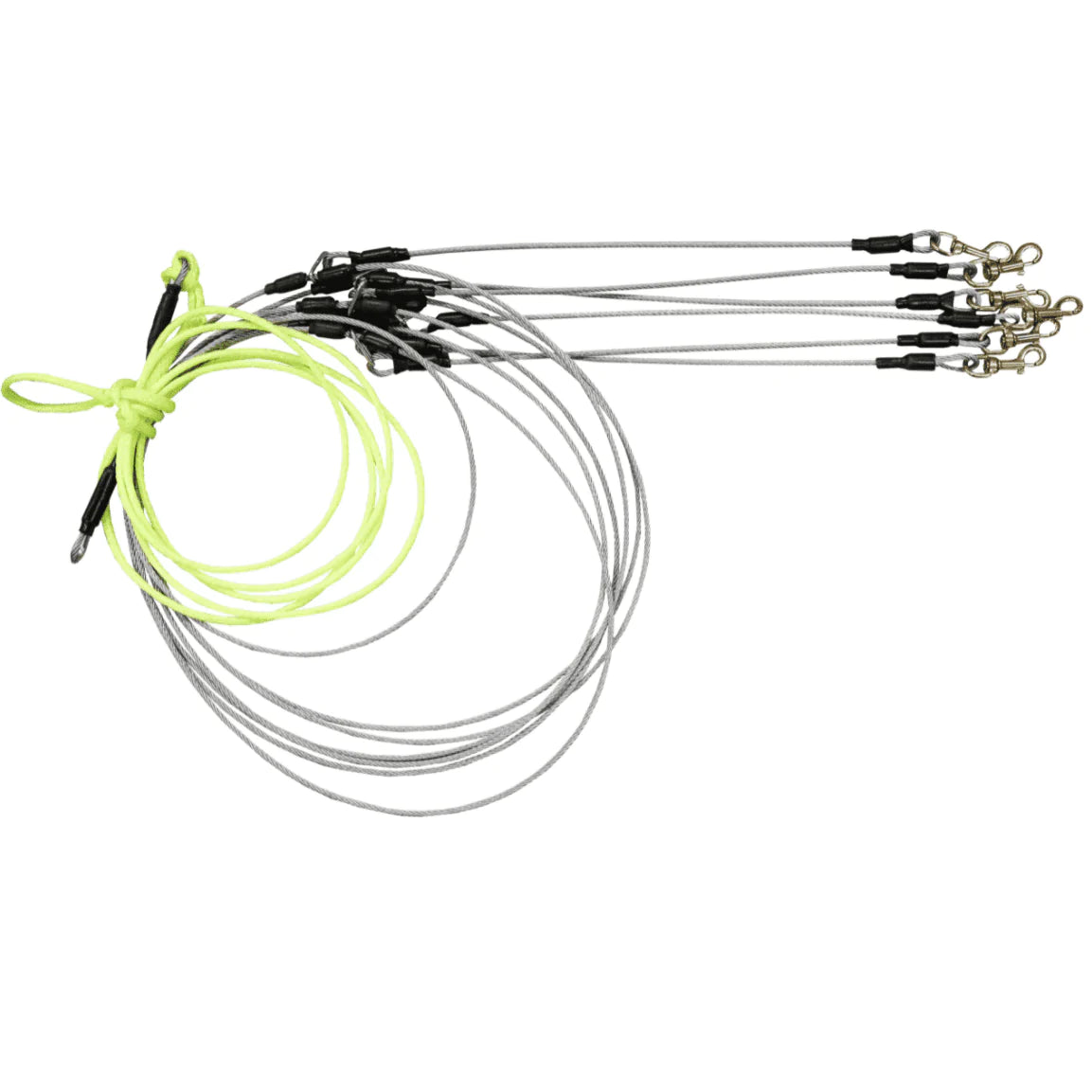
Team lines
Here you will find: high-quality pull lines (cable or rope) for sleds...
-
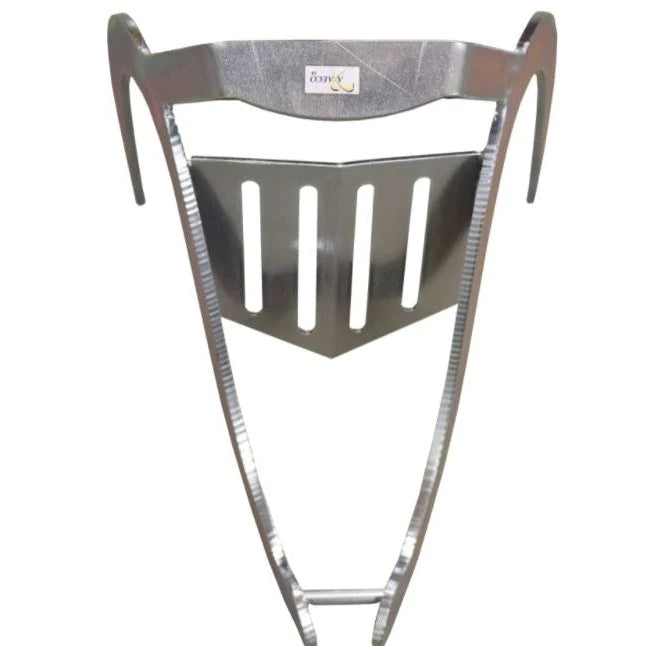
Sled Equipment
Sled Equipment such as snow anchors, brake mats, bungees.
-

Pulling harness for dogs
Ergonomic pulling harness for dogs for all pulling sports: canicross, skijoring, bikejoring,...
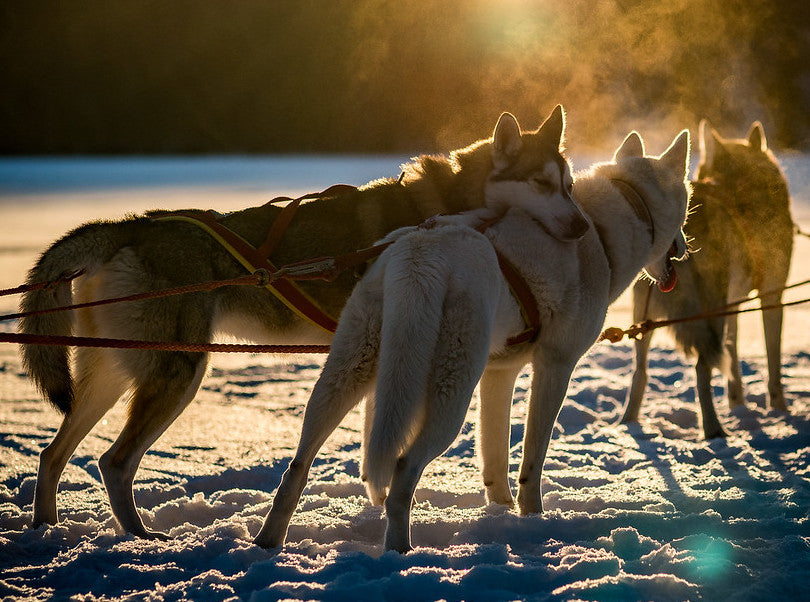
ACCESSORIES
-
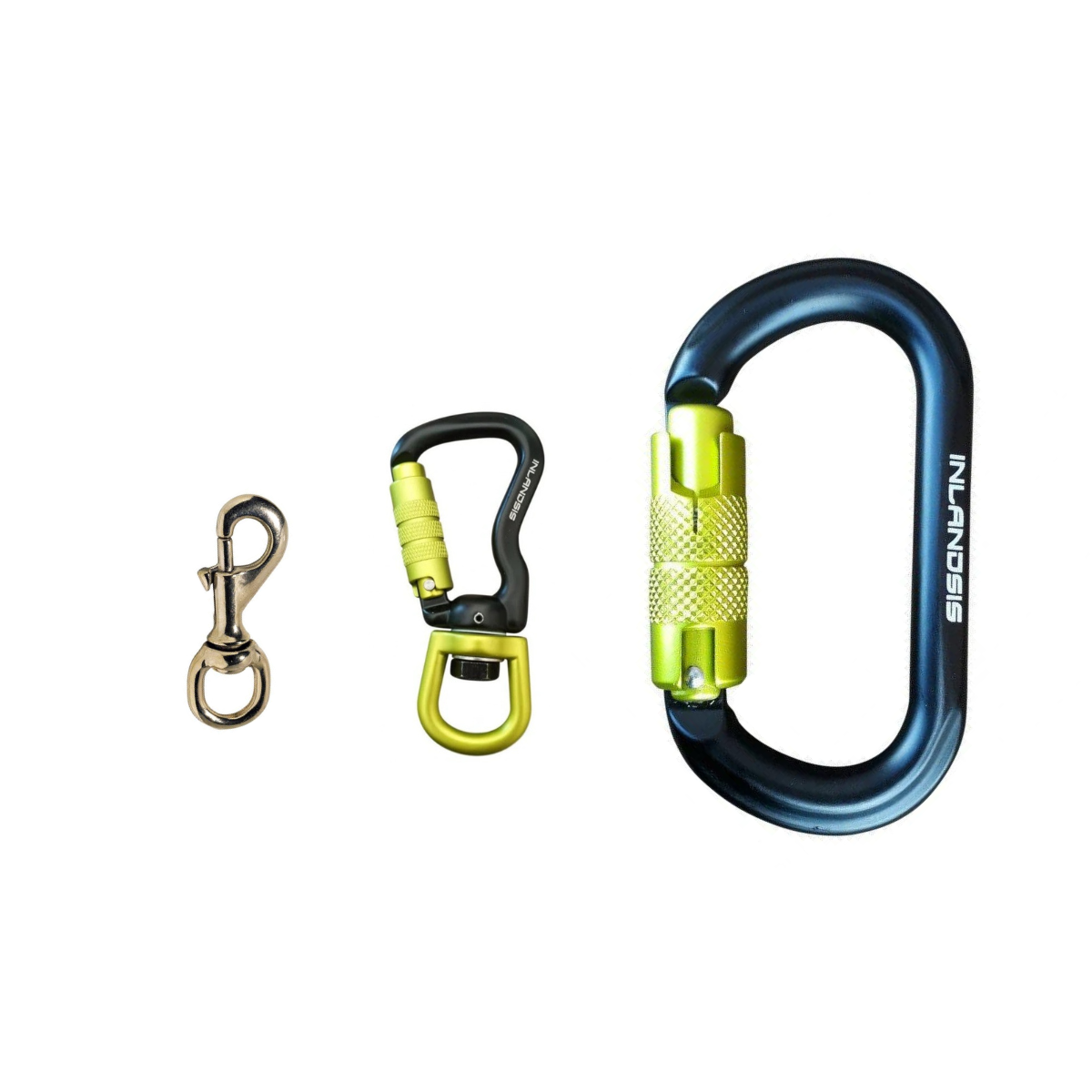
Carabiners and snaps for dog leashes and hiking
Durable carabiners and snaps are suitable for dog leashes, hiking gear, as...
-

Food and treats
In dog hiking food, high nutritional content and preferably light weight are...
-
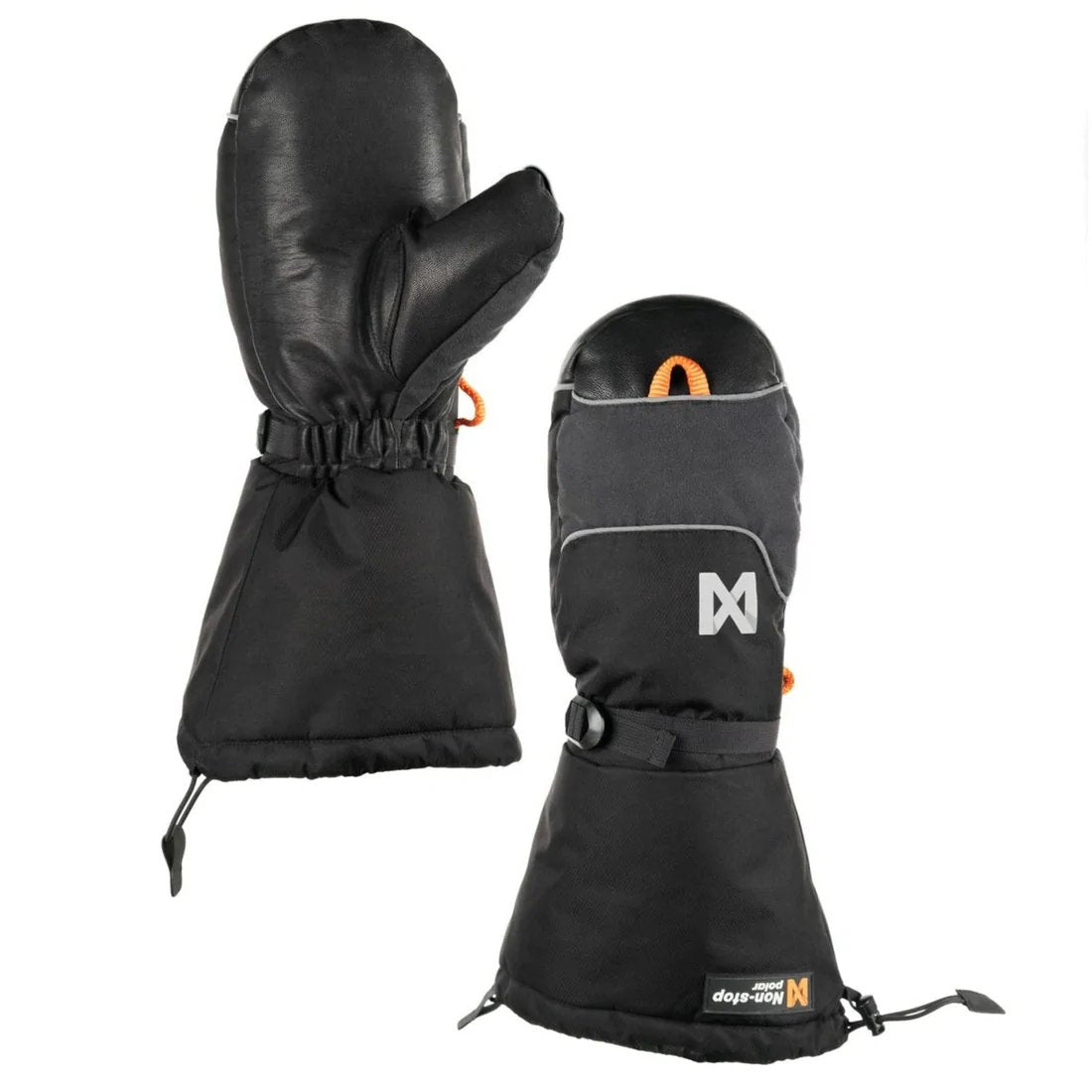
Clothes and accessories
Practical clothes and accessories, especially keeping in mind the needs of those...
-

Reflective lights and vests
With reflectors, safety lights, a dog light collar, and a safety vest,...
-
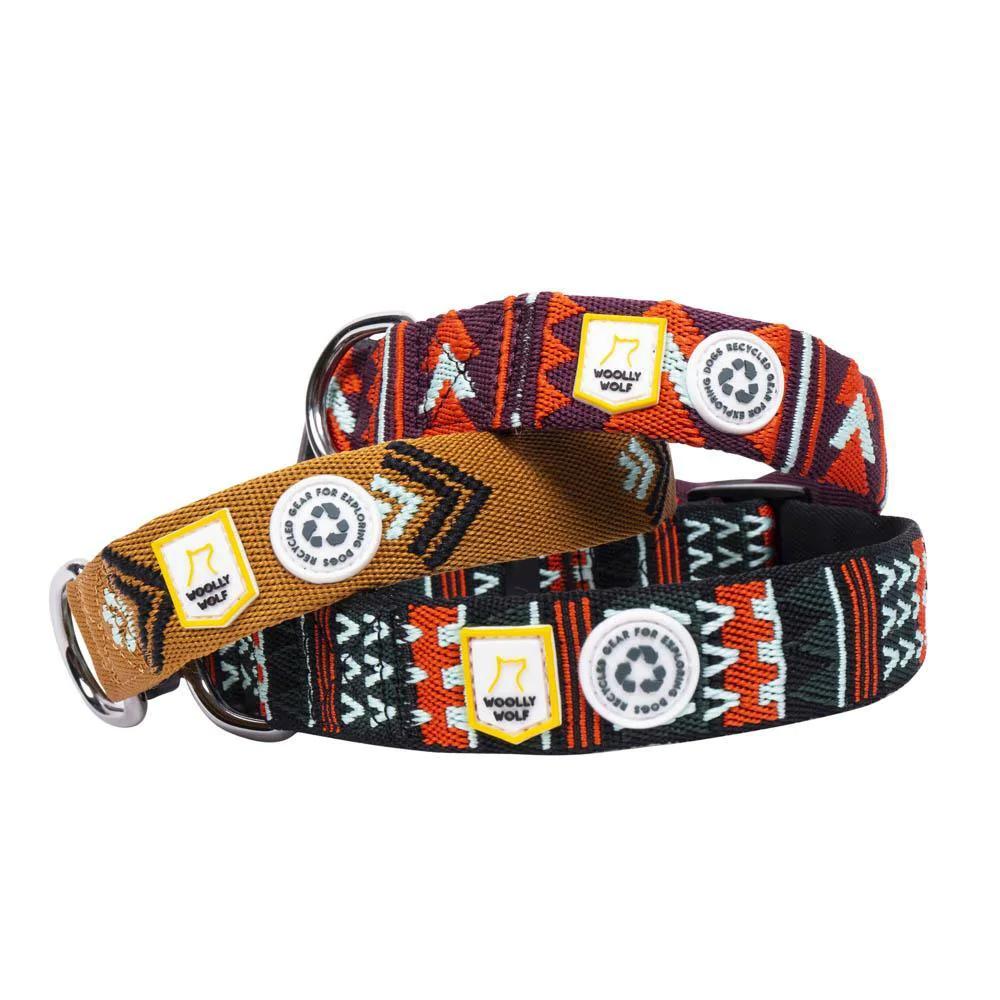
Dog Collars
A properly sized, durable, and safe collar is part of every dog's...
-

Gear bags and backpacks
Ahkiopouches/sled bags, gear bags for muddy sports equipment, handy dry food bags,...
